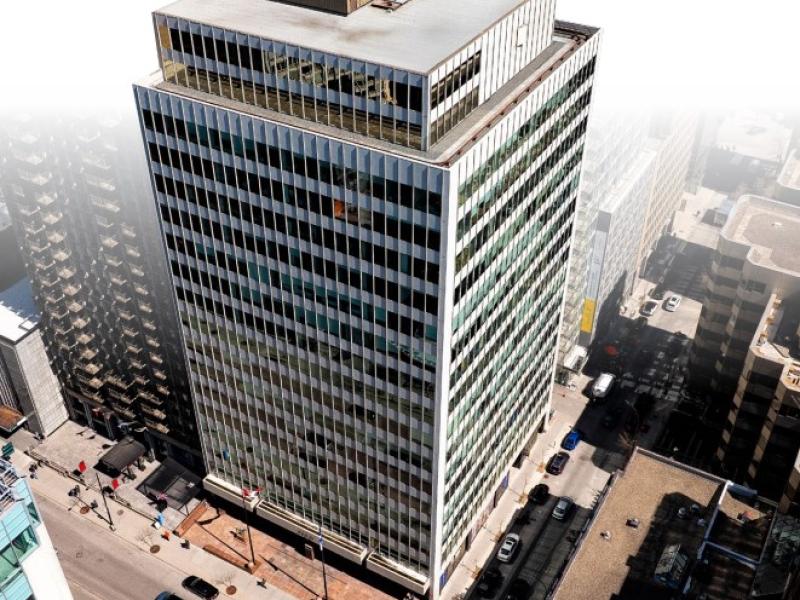
The roller-coaster ride continues for the MSCI/Real Property Association of Canada (REALPAC) Canadian Property Index. After plunging due to COVID-19 in 2020 and making a solid recovery in 2021, the 2022 results showed only a small overall return.
“We had the 2020 depths, a rebound in ’21, but then another drop in ’22 because the other shoe to drop was interest rates going up,” REALPAC chief executive officer Michael Brooks told RENX.
The total return on all assets, including developments, was 2.33 per cent in 2022. That compares to 7.9 per cent in 2021 and negative 4.1 per cent in 2020.
The total return on standing assets, which covers existing buildings, was 1.35 per cent. That figure was arrived at via a 4.35-per cent income return and capital growth of negative 2.9 per cent.
To put that in context, Brooks said the Toronto Stock Exchange (TSX) Composite Index was down 8.7 per cent, the S&P/TSX Capped REIT Index was down 20.5 per cent and the Total REIT Index was down 17 per cent in 2022.
What the MSCI/REALPAC Property Index measures
The MSCI/REALPAC Canadian Property Index measures unlevered total returns of directly held property investments.
Its goal is to enhance transparency, enable comparisons of real estate relative to other asset classes and facilitate comparisons of Canadian real estate performance to other private real estate markets globally.
The index started in 1985. It includes buying, selling, development and redevelopment activity data provided by major pension funds, insurance companies and large real estate owners in Canada.
The 2022 index encompassed 48 portfolios with 2,370 assets totalling 489.5 million square feet and a gross capital value of $172.8 billion.
The index has averaged an annual total return of 8.5 per cent since inception and 5.7 per cent over the past 10 years.
All asset classes trended downwards
All asset classes trended downwards in 2022. While industrial had a total return of 17.1 per cent, it was 31.6 per cent in 2021. The 2022 residential total return was 4.8 per cent, followed by retail at negative 3.9 per cent and office at negative 5.8 per cent.
Industrial capital growth was 13.1 per cent, followed by residential at 1.5 per cent, retail at negative 8.4 per cent and office at negative 10.2 per cent.
Office and retail returns were negative in most of the eight major Canadian cities included in the index.
The downtown office return was negative six per cent, compared to negative 6.2 per cent for suburban office. The corresponding 2021 return numbers were 2.4 per cent for downtown office and 4.3 per cent for suburban office.
Halifax had an 8.3 per cent total return, followed by Edmonton at 2.4 per cent, Montreal at 1.9 per cent, Calgary at 1.5 per cent, Vancouver at 1.1 per cent, Toronto at 0.7 per cent, Ottawa at negative two per cent and Winnipeg at negative 4.1 per cent.
Capital growth was negative in every city except Halifax, where it was 2.5 per cent. It was negative 2.1 per cent in Montreal, negative 2.8 per cent in Vancouver, negative 2.9 per cent in Edmonton, negative 3.1 per cent in Toronto, negative 4.6 per cent in Calgary, negative 6.1 per cent in Ottawa and negative 9.2 per cent in Winnipeg.
Brooks believes Halifax was the top performer because it has plenty of multiresidential, which performed relatively well, in its portfolio. He’s unsure why Winnipeg trailed the other seven cities in both total return and capital growth.
The U.S. had a total return of 5.7 per cent in 2022, which was about 2.5 times higher than Canada.
Brooks said the U.S. MSCI Property Index is heavily weighted towards multiresidential and doesn’t include much office, so it’s “difficult to make a true apples-to-apples comparison” of the performances of the two neighbouring countries.
2023 forecast
Brooks said it’s difficult to predict where the 2023 MSCI/REALPAC Canadian Property Index results will end up as it remains to be seen where interest and inflation rates will go.
“These macro issues are going to bear on the potential returns. If there's a recession, do we have some more business failures in office?
"Do we have more tenants reducing their footprints in office buildings and that cutting into office rent revenues? There is still a lot of uncertainty.”
Brooks said Q4 2022 was the second during which there were property valuation write-downs and he wouldn’t be surprised if there are more this year.
“I attribute that to the fact that the valuers will have more transactional data to rely on and there will be more comparables,” he said. “All it will take is one distress sale to set a benchmark and pull values down a bit more.
“So we'll see how we fare in Q1 in terms of capital growth, but the income return should continue to be there for all of the asset classes as their tenants are still in there paying rent so far.
“I’ve heard of no material defaults, although we're certainly watching a few retailers like Bed Bath & Beyond, which is apparently struggling a bit, and there may be a few others that had too much debt — particularly if it's floating rate debt.”
MSCI and REALPAC
MSCI provides decision-support tools and services for the global investment community. It has more than 50 years of expertise in research, data and technology to power better investment decisions by enabling clients to understand and analyze key drivers of risk and return when building portfolios.
REALPAC was founded in 1970 and is the national leadership association dedicated to advancing the long-term vitality of Canada’s real property sector.
Its 130-plus member companies include publicly traded real estate companies, real estate investment trusts, pension funds, private companies, fund managers, asset managers, developers, government real estate agencies, lenders, banks, life insurance companies, investment dealers, brokerages, consultants, data providers, large general contractors and international members.
REALPAC members have $1 trillion in assets under management and represent office, retail, industrial, apartment, hotel and seniors residential properties across Canada.










